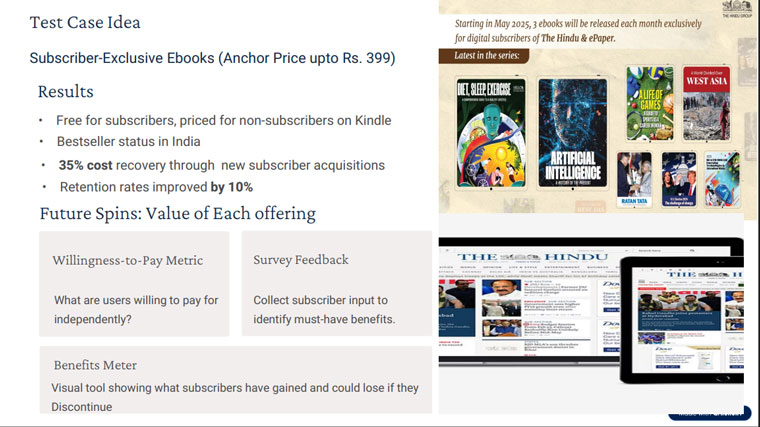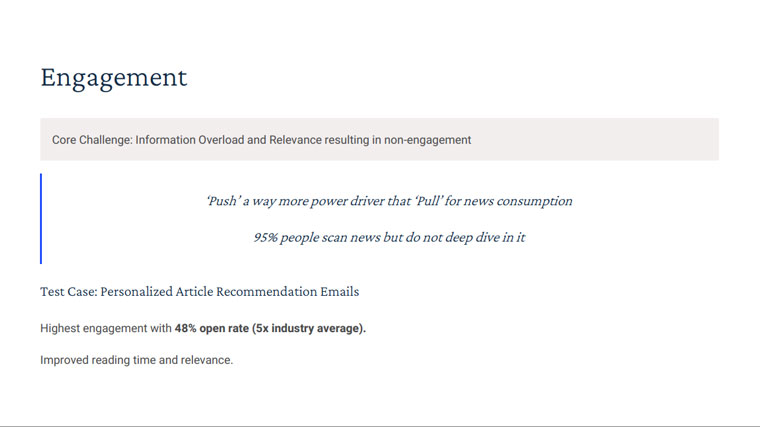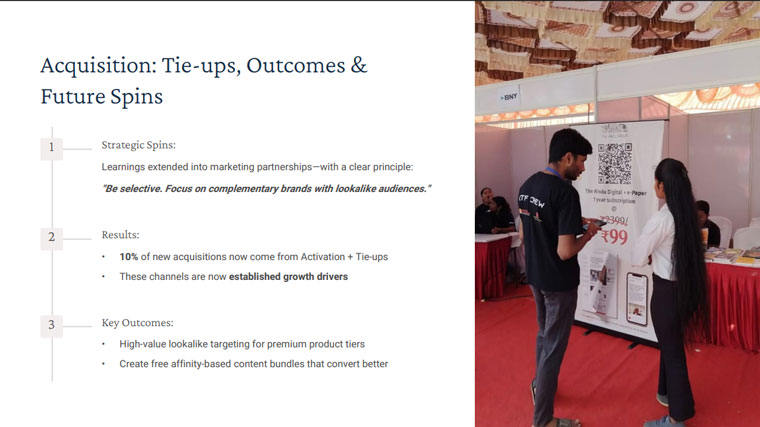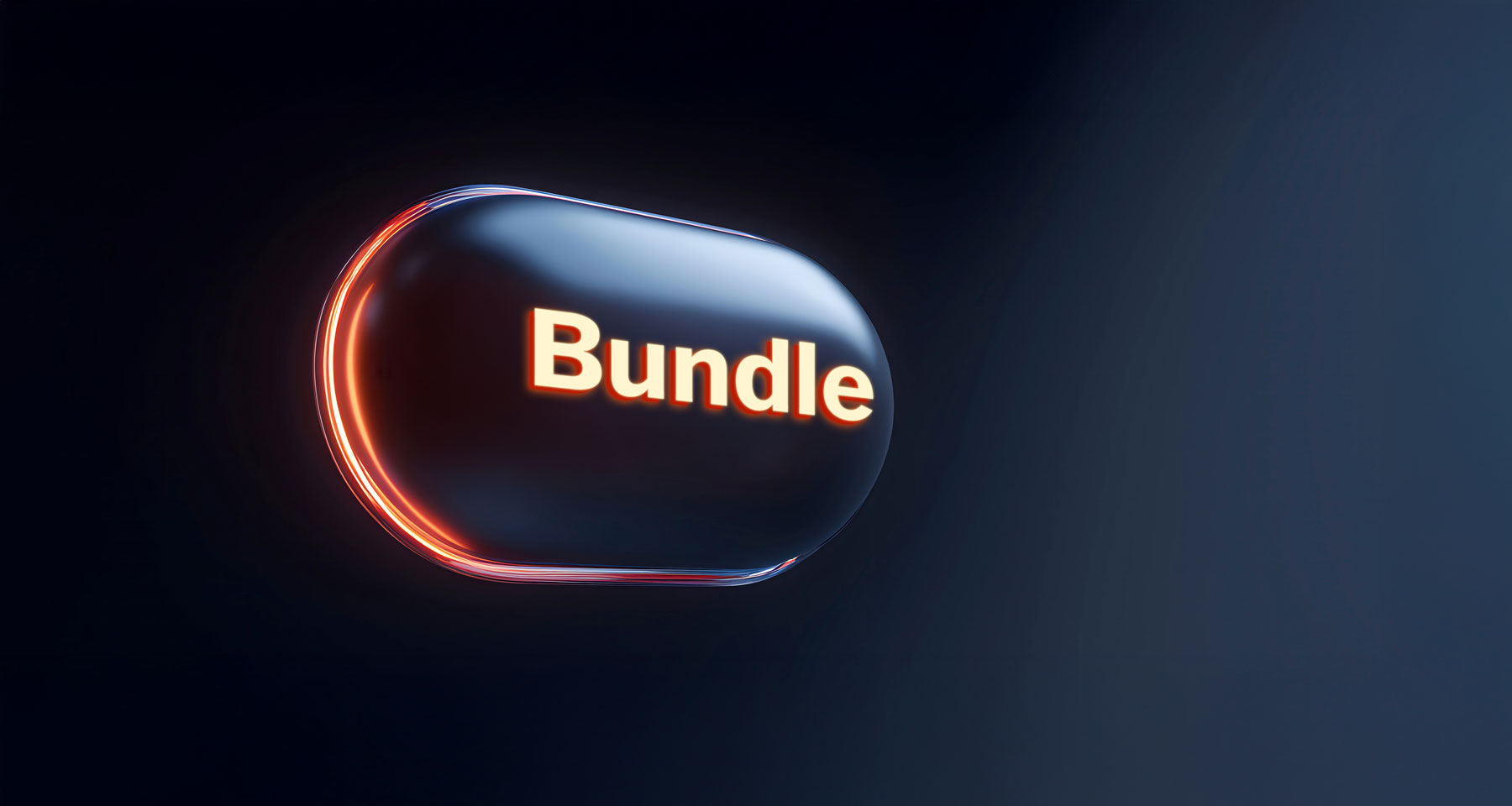The Hindu rethinks its digital subscriptions strategy
Readers First Initiative Blog | 01 May 2025
When The Hindu launched its digital subscriptions in 2019, it treated subscriptions as an acquisition business.
“We soon realised that was a great mistake and since then, we have been trying to correct things,” Pradeep Gairola, vice president and business head of digital, told INMA members during this week’s Webinar.
Today, retention is at the heart of The Hindu’s value loop, which now follows a cycle of retention, engagement, and acquisition — in that order.

One of the key challenges the team identified was how to establish the product’s perceived value to a subscriber.
“Quality is the underlying reason anybody subscribes to news,” he said. “So as far as that is concerned, that is a given. If you don’t have quality, there’s no one subscribing to you.”
However, subscribers look through a different lens and were not necessarily aware of the value they were getting, which included exclusive offerings like hard-paywall articles, Webinars, newsletters, and subscriber-only access to archives and events.
Once it started offering Webinars, Gairola said, retention went up 24%, but with an interesting twist: “Please note they didn’t attend; if they even just registered, they felt they were driving value from their subscription and that resulted in … improved retention rates.”
As the team sought to understand the value of a subscriber-exclusive benefit, Gairola said they learned “the perceptions were quite random.” To learn more, the team developed a test case by putting a value on each of the e-books sold by The Hindu.
The e-books were listed at US$5 each for non-subscribers but were available for free to subscribers. With a subscription costing US$12 to $14 per year, many saw the value in subscribing and getting the book. And the response was better than anticipated.

Had these books been competing on the traditional bookseller platform, each one of them would have landed on India’s bestseller list for the nonfiction category, Gairola said. “Clearly, when we put up a value of $5 for each book, we saw a lot more people downloading them ... it was a clear sign they were valuing it.”
These digital booklets not only increased retention by 10% but also drove acquisition: “Thirty-five percent of the cost actually got recovered from the acquisition itself,” he added, “and the editors were also very motivated.”
Encouraged by the success, editors turned the monthly initiative into a weekly product and have seen the programme enjoy continued success — and offer insight into future offerings.
“In terms of the future, we need to really understand what are the subscribers paying for? For example, on a standalone basis, if a subscriber is paying for a Webinar or a book, any of the things which an e-subscriber pays for, those are the things where we feel there might be an opportunity to really go after this kind of pricing.”
Driving engagement with personalisation
Another key area of focus is engagement, which The Hindu identified as being hindered by information overload and lack of relevance. This, Gairola said, was resulting in non-engagement.
To resolve this, the team leaned into personalisation and launched a new product to reach out to subscribers instead of waiting for them to come to the Web site.
“When a user visits The Hindu, they get personalised recommended articles. However, many of these subscribers do not come very often,” Gairola said. Since AI knows what they read, the team created an AI-populated weekly newsletter filled with articles that would have been recommended to the subscriber if they visited the site.
“It has an open rate of 48%,” Gairola said, noting that is nearly double the open rate of the standard newsletters.

The team is now aiming for more format innovation, including modular content delivery (like alerts, summaries, full articles, and polls) and time-based content sequencing that will delivering different formats at different times of the day based on user behaviour.
For example, Gairola said the morning might be best for brief alerts, midday for summaries and infographics, and the evening for in-depth reports. “We feel that the user preference clusters can also help create big bucket opportunities,” he added, including new companion apps for specific audiences like management students and law students.
As The Hindu continues to find success with new products, Gairola mentioned that it is critical not to get too comfortable with one product or approach: “Engagement is an ever-changing dynamic,” he reminded. “It’s always a moving target.”
Things that are innovative today will become expected tomorrow, so news media companies must always remember what’s at their core. In The Hindu’s case, that is being a content-centric organisation.
Rethinking acquisition
Although acquisition is no longer the primary focus, The Hindu is still innovating in this area but has reversed its original approach.
“The missing element for us was that we were never targeting people by understanding their retention potential,” Gairola admitted.
Now, the company starts with identifying high-retention potential clusters — such as students at civil service coaching centres or readers at book fairs — and then designs acquisition offers tailored to them.
To test pricing thresholds, the team ran a bold campaign offering subscriptions at different prices and, from that campaign, it learned what type of packages to focus on. Activations like this now account for 10% of new subscriptions, with room to grow.
The future, he said, will be to target high-value lookalike audiences of its current subscribers.

Whilst The Hindu has seen success in this approach, Gairola warned that the cost of acquisition increases every year, and marketing expenses cannot be directly proportional to user acquisition unless you have deep pockets.
He also cautioned companies against depending solely on tech platforms for user acquisition: “Like any marketplace, [they] are not predictable and you cannot plan for the next two or three years,” Gairola warned.
“My single piece of advice is to have many sources of acquisition and don’t just depend on a tech platform because, like any marketplace, the price is unpredictable, the volume is unpredictable, and that can be a dangerous strategy.”






























